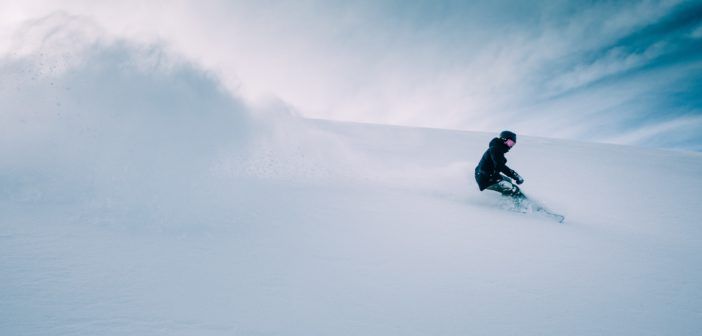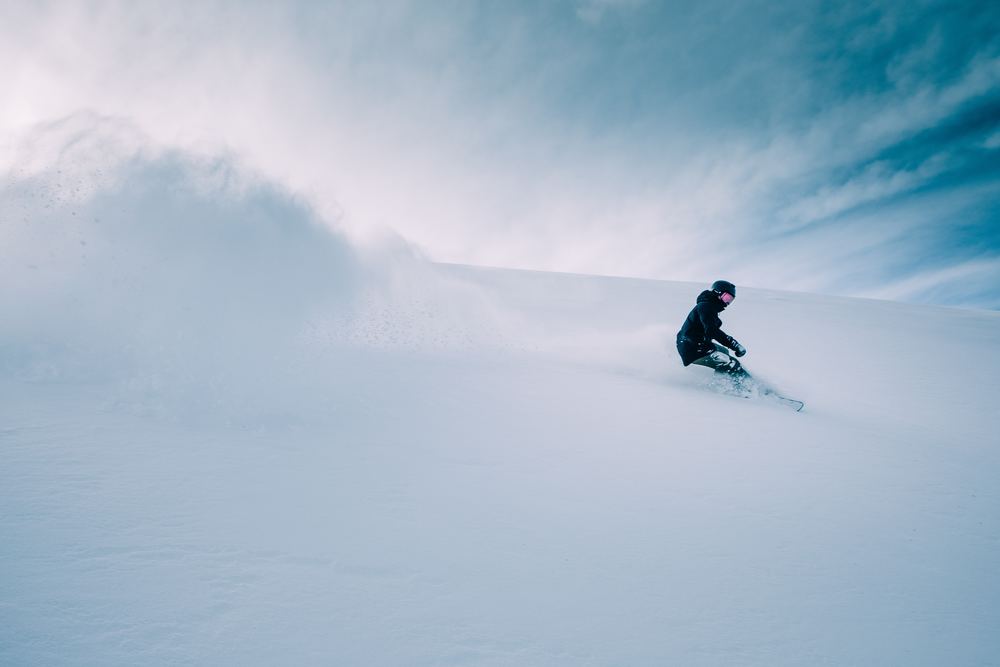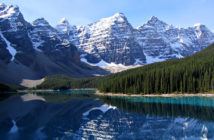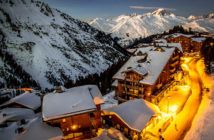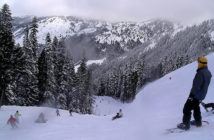If you look back at the many times you’ve skied over the years, you’ve definitely had some rough spills and falls – but you’ve also become a much better skier because of it.
Those tall, groomed slopes that used to seem so tough have become way too easy for you, and you may be seeking more of a challenge from the mountains that surround your favorite ski resort.
If you’re an advanced or expert-level skier looking for a fresh thrill and even fresher powder, then you may want to consider going off-piste skiing.
Contents
What Is Off-Piste Skiing?
Off-piste skiing is basically skiing on terrain that’s off the beaten (or groomed) path.
The term “off-piste” comes from France originally, since “piste” translates to a well-maintained slope. With that in mind, in the U.S., off-piste skiing is typically referred to as “backcountry skiing” or “powder skiing.”
These slopes are unmarked by trail marker poles or pistes, and are generally left untouched by many other skiers or the large grooming machines that tidy up the marked trails for a beginner or intermediate-level sportsmen to slide down.
A Harder Road
Keep in mind that these off-piste slopes can be quite treacherous if you don’t know what you’re doing.
Most of these slopes lie outside of a ski resort’s territory and control, which means that you will mostly face a whole slew of new problems all on your own.
You will have to deal with less controlled snow conditions and terrain, including deep snow, crud, bumps, steep slopes, and narrow chutes.
These slopes are also more prone to avalanches or leading you off cliffs, steep rocks, or onto the tops of other cliffs with no way out.
The remote nature of off-piste skiing definitely presents far more dangers than your typical slopes at a ski resort, but they may also present you with the thrill you’ve been dreaming of tackling.
As long as you take a few lessons and do your research beforehand, you’ll be carving down some beautiful, powdery slopes with ease!
How to Ski Off-Piste
If you’re interested in off-piste skiing, the first thing you should do is hire a qualified off-piste instructor or guide before even thinking of heading off on your own.
These instructors will very likely teach you some important new techniques, which could help you prepare for the obstacles you’re sure to face. They may even save your life.
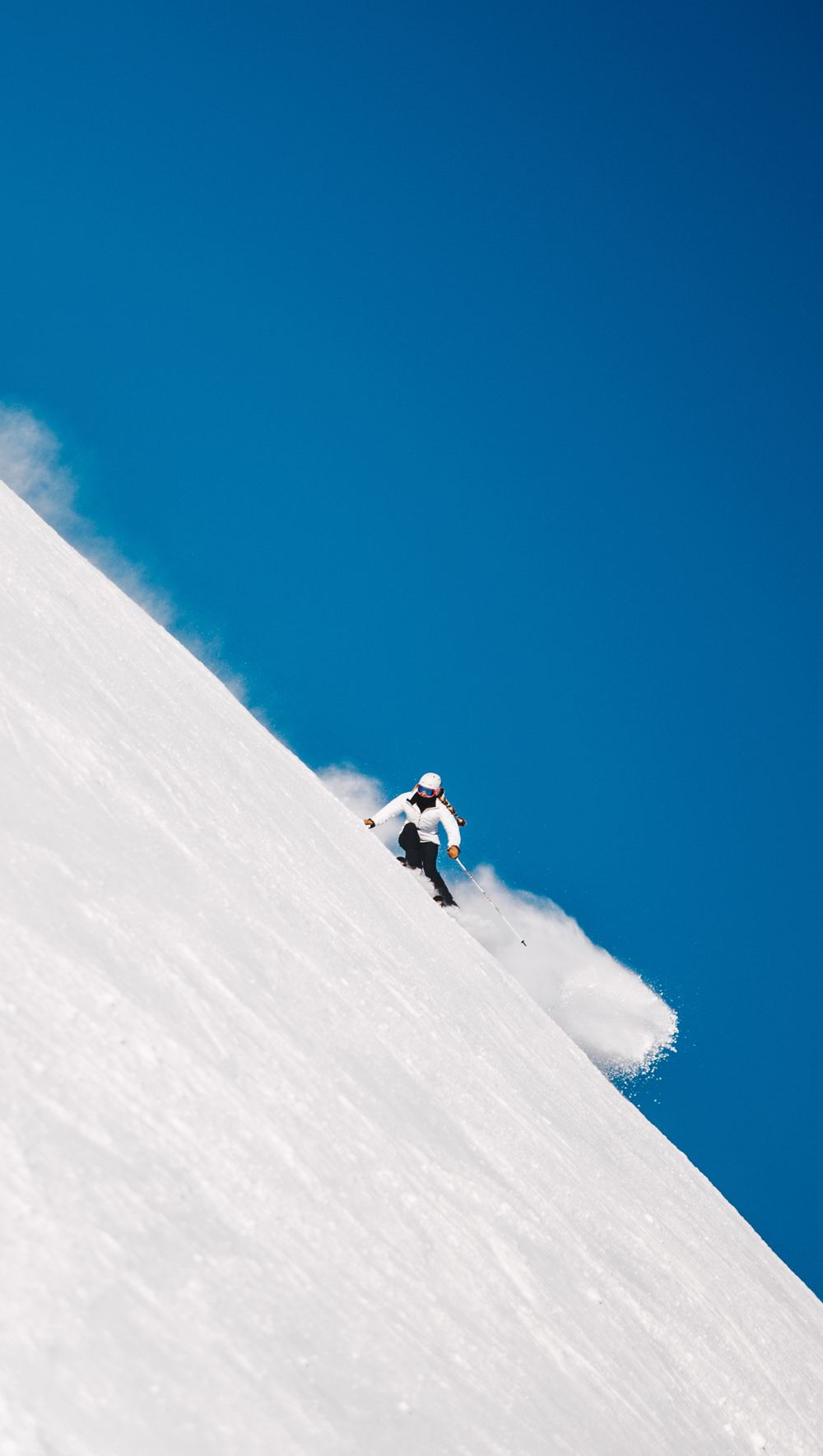
Pole Plants
Knowing how to perform a blocking pole plant can help you make tighter turns along these steeper slopes.
Essentially, this technique blocks your upper body from accelerating downhill, allowing for better-timed turns and a more efficient way to maintain your speed level.
You should always plant your poles on the inside of a turn, timing it so you can set the edges of your skis at the same time.
Make sure your downhill pole is at about a 45-degree angle to your skis, then slowly push down to ski around that pole, so you can be ready to plant the other hand with the next edge set for your following turn.
Hop Turns
Keep in mind that some off-piste slopes like couloirs, chutes, and gullies are way too narrow for any sort of wide, arcing turns. You will instead want to hop these obstacles to overcome them completely.
First, you should crouch down as low as you are comfortable with. This will help your knees absorb the kinetic energy that setting your edges and planting your poles for turning should create.
Once you see an obstacle in your narrow path, shoot up from the crouch and pivot around that pole you planted.
When landing, plant your other pole, crouch down again, and prepare yourself to jump up whenever an obstacle presents itself before you.
Kick Turns
Kick turns can help you quickly change direction without sacrificing elevation, which is perfect for navigating any unfamiliar off-piste slopes.
You may find yourself heading for a cliff or a slope that’s too steep for your comfort. Knowing how to perform a speedy kick turn could save you from a disastrous accident!
To perform a kick turn, point your skis sideways on the slope and turn your upper body so that it faces downhill. As you do this, take your downhill pole and plant it uphill behind you.
You will then use both of your poles and your uphill foot to stay balanced as you enter the turn.
After this, you need to kick your downhill ski up and forward to bring it around to the front of you, so that your foot faces the other direction. Quickly move your weight onto that downhill leg and find a point where you can balance on it securely.
Pick your uphill ski and pole up, and bring the both of them around to mirror your other ski and pole. As you are turning completely around, your uphill ski will then become your downhill ski (and vice versa).
This video goes into detail on off-piste skiing techniques.
Off-Piste Skiing Equipment
Bringing the right off-piste skiing equipment with you can definitely help maintain your safety during an off-piste skiing trip.
You may want to buy or rent new skis, should you find your old ones are overly worn or not as responsive as they used to be.
You should also buy a beacon or avalanche transceiver, a shovel, a backpack filled with food and water, and the right skiing clothes to stay warm.
This will ensure you’re safe and well-provided for, should you accidentally get caught in an avalanche or become lost.
Off-Piste Skiing Insurance
Purchasing off-piste ski insurance without a guide can be quite tricky. After all, most insurers only cover recreational skiing and snowboarding in their ski insurance policies.
Luckily, there are a few insurance companies listed here that cover off-piste skiing without a guide, as well as skiing accidents and the like—provided that you don’t ski alone and follow all the terms of your policy, of course.
Off-Piste Ski Tips
Even after all the lessons and practice runs you take on in preparation for skiing off-piste, your first off-piste slope can still be rather daunting.
It may even be difficult to remember what to do in case of an emergency with the sheer drops and accident statistics zipping through your mind.
Just remember these following tips:
Keep a Steady Rhythm
When you ski off-piste, keep moving your body in a steady up-and-down motion to propel yourself down at a nice, even pace. Keeping up the right posture is essential in creating this steady rhythm.
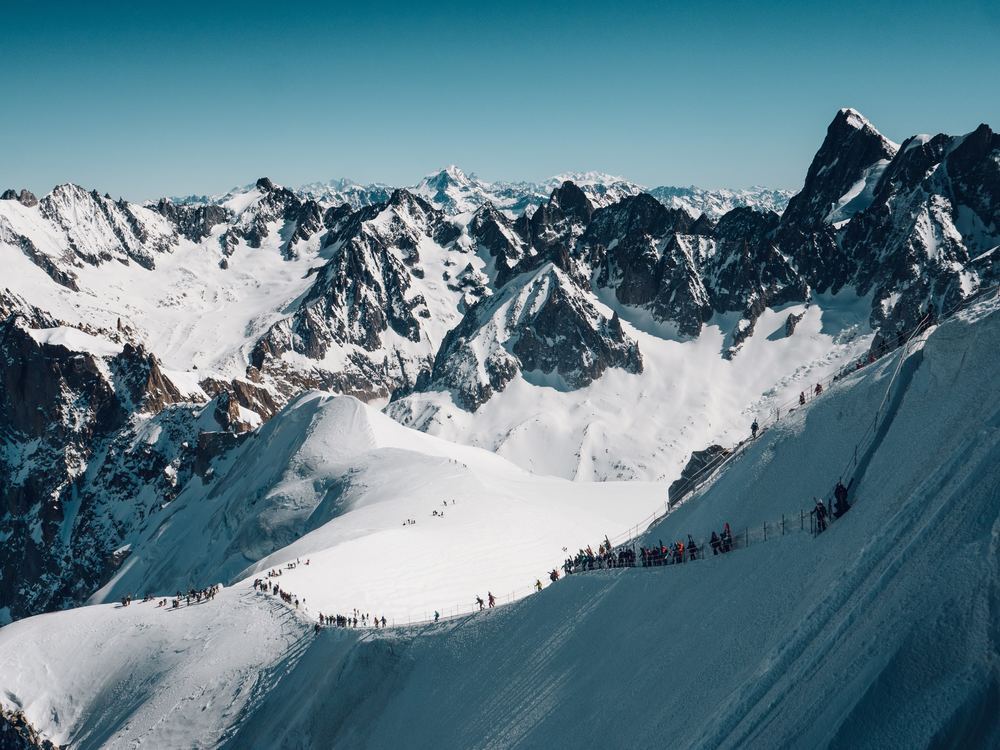
First, make sure your stance is kept compact and crouched, and then rise up, slowly flexing and stretching your ankles, knees, and hips back up with you.
Never fully stand up on your skis. This will cause your body to hang back too far and burn your thigh muscles as you continue to ski—assuming you don’t lose balance and fall altogether.
Instead, you should stop at a point before your body is fully upright, then crouch down and repeat this motion all over again.
Follow this strict up-and-down rhythm while keeping your hands forward, and you should be off-piste skiing like a pro in no time.
Stay Patient
Even when you think you have the hang of off-piste skiing, don’t try to execute your turns any faster than you normally would.
You must push your feet gradually against the snow in order to complete a successful turn.
If you try to turn too quickly or give up on a turn too soon, your skis may accelerate faster than you want them to. The result could be a backward lean or even a messy spill on the slopes.
Keep Up a Good Speed
Zooming down a huge slope may seem initially frightening, but keeping up the right speed allows your skis to float above the deceptively deep snowbanks around you.
Your skis will drag back or even sink right into the fresh snow if you’re too slow, which makes balancing and turning even more difficult.
Reaching the proper speed minimizes this resistance on your skis, and provides the lift and float you need to ski down the mountain safely.
Always Check the Snow Conditions Beforehand
It’s always important to check the snow conditions and to consult a map of the surrounding terrain before you take on a trip.
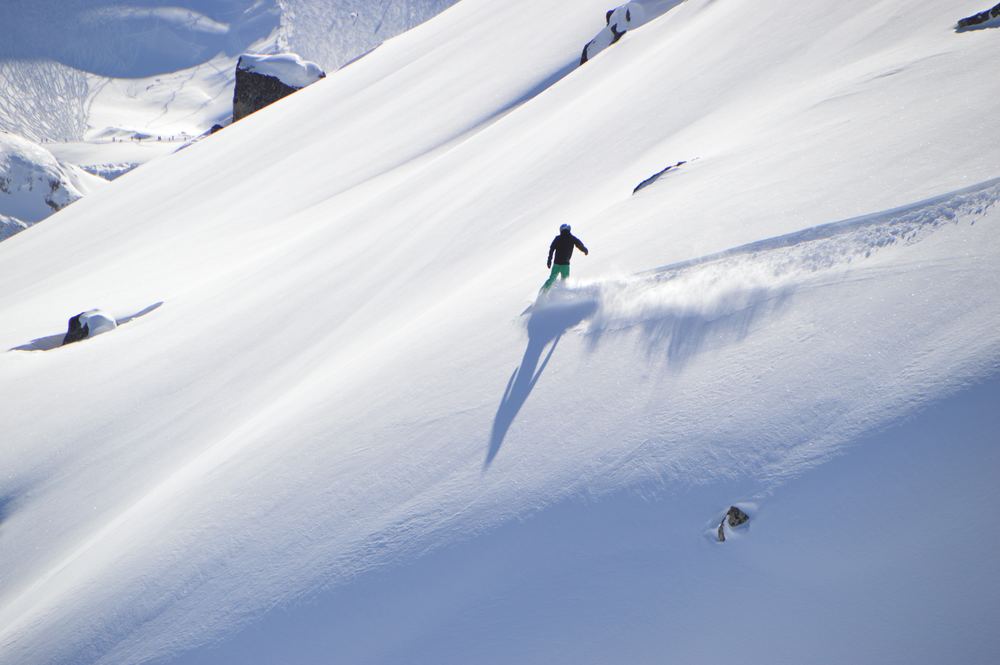
No slope is immune to an avalanche, so it is best to check the International Scale of Avalanche Hazard Rating for each mountain to be sure.
There are five avalanche hazard ratings: low, moderate, considerable, high, and very high. These ratings can change multiple times throughout the day, depending on the weather or other circumstances.
You should be extremely careful on mountains marked with a considerable avalanche hazard rating. Anything above that should be avoided.
Keep in mind that light snow tends to collect in hollows, leaving ridges bare and hard. Always take note of the terrain and surface of the snow before you move over it.
In Case You Fall
Falls are inevitable when you’re first learning to tackle a new slope, even at a well-groomed resort. However, they can lead to serious injuries on off-piste terrain.
If you do end up falling into a huge pile of snow, don’t panic.
You can use your hands to push yourself up again, but this might actually make you sink deeper into the snow.
Instead, you should cross your poles into an “X”, grab onto the intersection with one hand, then push yourself back up again.
Best Off-Piste Skiing In the World
St. Anton, Austria
This world-famous resort is renowned for its runs in the huge bowl beneath the summit of the Valluga, as well as its great off-piste slopes in the Stuben sector and on the separate Rendl mountain.
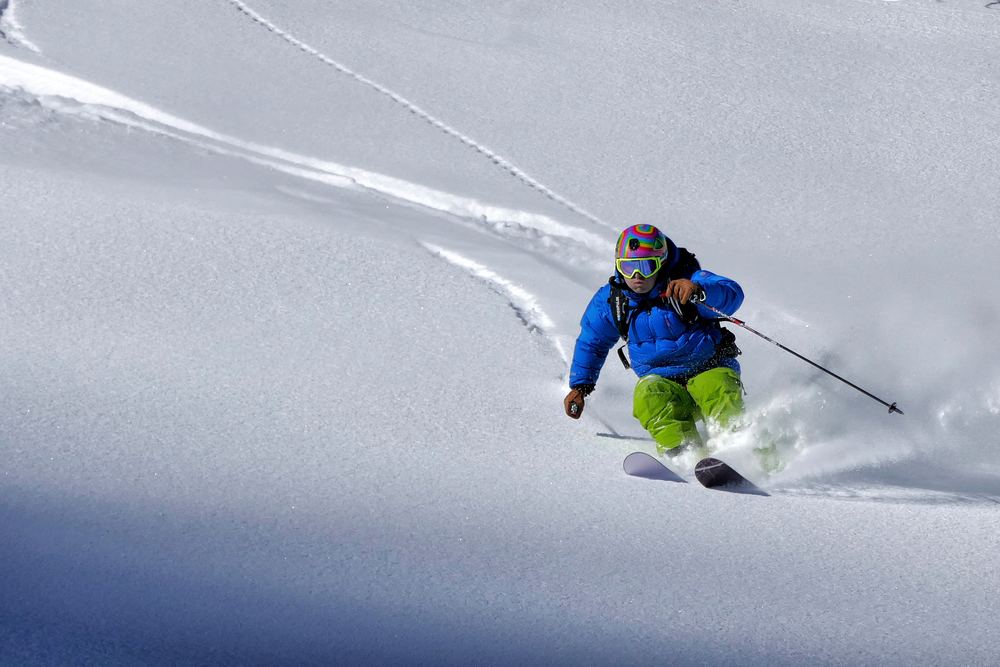
In the eastern part of the town, you have Schonegraben, or “The Beautiful Grave,” which features some of the steepest glade runs and bowls ever.
St. Anton truly is an expert off-piste skier’s dream. It features vertical descents of up to 1,000 meters, powder that stays deep and light for days, and a whole army of highly-qualified instructors and guides, who can make sure you’re ready to hit these fine, steep slopes.
As such, it’s not hard to see why so many people come to visit it each year!
Chamonix, France
Chamonix boasts the most famous off-piste slope in the world: The Vallée Blanche. This run starts by riding up the Aiguille du Midi to its enormous 3,842-meter summit, then winding down a lengthy 24-kilometer trail across the Colle del Gigante and Mar de Glace glaciers.
Skiing through the Brévent-Flégère region will grant you gorgeous panoramic views of Mont Blanc and the peaks of France, Switzerland, and Italy. You’ll find some excellent natural pipes and table-tops here as well.
New off-piste skiers should head to the Balme and Les Houches areas, where they can dip on and off the pistes without straying too far from the resort.
Verbier, Switzerland
Verbier has many tough off-piste slopes for you to conquer. The run off the back of Mont Fort, for instance, is a true skiing highlight.
This huge bowl has a range of different, hidden pathways leading down through untracked powder; these will have you feeling as if you have the entire resort to yourself.
In fact, most runs in this location will have you feeling that way! The Stairway to Heaven run will drop you straight into a deserted valley with excellent snow coverage.
While less popular than the former two, the Vallon d’Arby, from Lac des Vaux to La Tzoumaz, will land you in deep patches of untracked powder to carve through.
The resort also boasts excellent off-piste skiing courses from Powder Extreme, the British-run New Generation ski school, and the Warren Smith Ski Academy alike.
This video explains some more on some of the best off-piste skiing in the world.
Conclusion
Off-piste skiing is a thrill that most advanced skiers may be too hesitant to try. After all, there are dangers to consider in addition to thrills.
However, if you follow all these tips and take the right precautions beforehand, you’ll find yourself skiing down beautiful, untouched slopes like a pro soon enough!
Where’s your favorite place for off-piste skiing?

